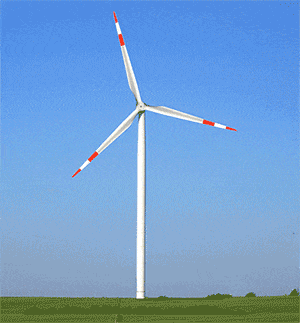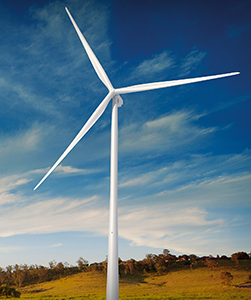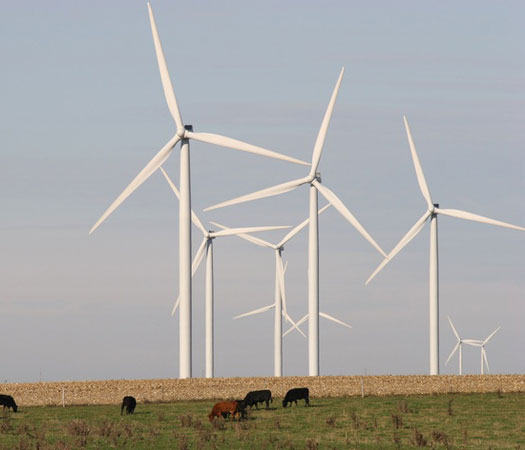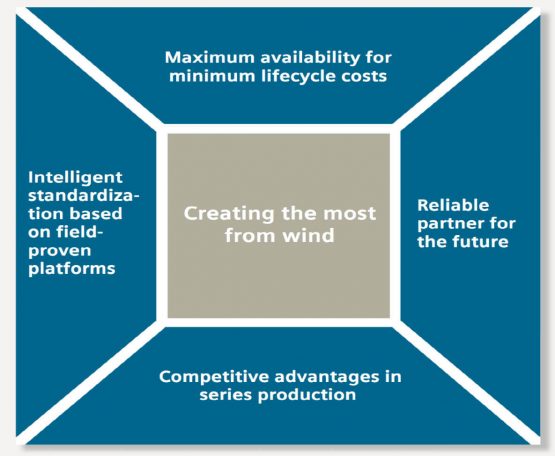Creating the most from wind
 Wind energy for a sustainable future
Wind energy for a sustainable future
Wind energy’s potential is huge. We are committed to driving this potential into real growth for the future of renewable power. Toward this goal we enable profitability and reduce project risk by pushing the boundaries of what’s possible. Integrated solutions along the value chain help customers transform wind into a profitable asset for a sustainable tomorrow.
Creating the most from wind
Our products and system offerings interact optimally to get the most from the wind. The result is: maximum availability and efficiency, low production and maintenance costs, time savings in engineering and commissioning, as well as shorter time-to-market for new turbine concepts.
Reliable partner for the future
We along with our specialized partners are the experienced and reliable partner for all the electrical equipment in a wind turbine. The range of wind equipment encompasses all the products, systems and solutions for the electrical drive train. Our decades of unique expertise are directly incorporated in our portfolio for the wind industry. Our experience in industry in general and in the area of wind energy in particular enables us to supply products in large quantities – and to combine them application-specifically.
Support in every direction: We make our entire wind turbine know-how available for your success.
Finance Is critical to project success
Financing is a critical component. It has been instrumental for us to find the money to build wind farms. We have solutions ranges for the wind energy sector to structured investment financing (like leases, loans …ETC.) to infrastructure and project financing. In addition, its portfolio includes acquisition and growth financing, typically as syndicated loans.
Solutions every step of the way
We have peerless expertise integrating customer needs into wind energy solutions for maximum benefit. Discover our portfolio and see how products and solutions turn wind power into a viable source of green energy.
 Because the future won’t wait
Because the future won’t wait
The future isn’t a faraway place. It’s as near as tomorrow and it will affect us all. As energy consumption soars, how will we meet the demand? Fossil fuels are a finite resource that will gradually disappear. The natural replacement is sweeping freely around the earth. Wind. Its renewable, predictable, fast to install, clean, and commercially viable.
We have the data to support our prediction that within the next few years as much as 10 per cent of the world’s electricity consumption will be satisfied by energy from the wind. What’s more, we have the confidence to say that wind power is an industry on par with coal and gas.
Wind power is competitive
wind power has been taken to a level of technological maturity where it can compete on price with conventional sources of energy such as oil and gas, making it a sound business investment.
Wind power is free and plentiful
In 2006, a report by Emerging Energy Research showed that land-based wind power is equal in cost to electricity from a new natural gas fired plant – and only marginally more expensive than electricity from a new coal-fired power station. And that’s before the cost of CO2 emissions are considered.
Wind power is predictable
As we all know, the price of oil, natural gas and other non-renewable materials can be volatile. But the price of wind is predictable and stable – and free in every currency. This creates the strongest possible business case for people and governments looking for more secure ways to invest in energy.
Meeting the world’s energy demands
Neither wind turbines nor conventional energy plants run at full capacity 365 days a year. But in countries like Denmark, wind already meets one-fifth of the population’s total energy needs – and Denmark achieved this using less than 20 per cent of its wind resources. On continuously windy days, Denmark actually gets all of its electricity from the wind.
Energy independence and local jobs
Wind knows no limits, nor does it recognize national boundaries. It’s an unlimited form of energy, and it’s found freely in countries with even the poorest natural resources. Wherever it blows, it can bring jobs to support the local economy – and break the dependence on energy from external suppliers.
Wind power is independent
This two-fold benefit is important not only for business but for political decision-makers. Energy is becoming an increasingly strategic issue for governments around the world – especially those currently dependent on foreign imports to fuel their homes and economies.
Wind power is fast
With wind power, there are none of the long lead times involved with conventional fuels. In less than 12 months, a wind power plant can be up and running – producing energy, and generating a return on investment quickly.
Making wind energy an attractive investment
From a business perspective, we can predict that wind will provide at least 10 per cent of world electricity consumption by the next few years. This will require greater investment in wind power throughout the world, and we know it can be achieved.
We are constantly researching ways to shorten the time it takes to install our turbines to make wind power even more attractive.
An investment in wind power creates a ‘win-win’ situation for the environment and the economy – with clean energy free from CO2, and thousands of sustainable jobs.
Wind power is clean
Wind power produces energy, pure and simple. No CO2, no other greenhouse gasses, no hazardous waste left behind as a poisonous legacy for future generations. And, unlike coal and nuclear plants, it doesn’t consume huge amounts of water – which is itself becoming a scarce resource.
Clean energy efficiency
As an example, one V126-3.3 MW wind turbine in a low wind will generate 240,000 MWh during its 20 years of operation – thus sparing the environment the impact of a net volume of approx 230,000 tons of CO2, as compared to the figures for energy generated by a coal-fired power station.
Leading the world in sustainable energy
We already lead the world in turning wind power into clean, sustainable electricity. But we also want to lead by example. So, our goal is that by the next few years, 60 per cent of our own internal energy needs will be met by clean electricity.
Political Affairs
Three initiatives could lead the way: the polluter pays principle, securing a level playing field and rewarding power sources with positive externalities.
Policy makers around the world stand before a historic opportunity to meet the growing demand for energy without inflicting substantial costs to society due to adapting to climate change and pollution.
Over the coming decades the global energy demand is expected to increase heavily (27-61 per cent. in 2050 according to World Energy Council). At the same time a large number of conventional power plants are aging and will be shut down.
The world needs new capacity and wind energy is a proven technology which can supply part of this quickly and effectively. At the same time, wind energy limits the indirect costs from climate change and pollution, which is an integrated part of power production with fossil fuels. Consequently, wind energy is a very cost-effective solution to society.
However, in many countries not all indirect costs are considered in decisions about power production. This leads to suboptimal solutions, and policy changes are needed nationally and globally to alter
Polluter pays principle
The polluter should incur the costs from the negative effects – no matter if this comes in the form of health effects, water pollution, climate change or something else. It sounds logical, but in reality, it is not.
We need to follow the polluter pays principle when it comes to power production. This includes putting a price on CO2 emission, which reflects the costs from adapting to a changing climate. Without such a price, society will continue to suffer the costs and polluters will continue not to weigh in the societal costs of their actions.
This is not sustainable, and policies need to start moving in the direction of following the polluter pays principle in all cases.
Securing a level playing field
Subsidies are a necessary tool in supporting new technologies which are not yet competitive but have substantial positive characteristics from a societal perspective. However, subsidies should be limited to exactly that, as continuing the support beyond this point will hinder free competition.
Today, this is not the case. In the OECD-countries alone, support mechanisms for fossil fuels include 550 different schemes, according to OECD.
In order for different technologies to compete at a level playing field, policy makers need to look thoroughly into the long list of support mechanisms and direct them to immature – but promising – technologies.
Onshore wind energy is a proven technology able to compete with other energy technologies and consequently should be able to live without subsidies in the near future. However, this requires a level playing field which would include the end of fossil fuel subsidies.

Rewarding power sources with positive impacts
There are two sides to the coin of impacts from power production – the negative and the positive ones. The negative impacts should be covered through different measures, including the “polluter pays” principle. At the same time, though, we need to put a value on the positive impacts.
Positive Impacts on society from power production can take different forms. We need to remunerate the most important ones, as this is the only way to make sure that the value to society is included in the decision made by investors and power producers about how to produce the needed power.
Two examples of important impacts are the security of supply and price stability. They are important, because dependence on import of a certain fuel from other countries adds to the vulnerability of the power production.
For instance, what happens if the import is suddenly impossible – due to political or other reasons – or if the price suddenly goes through the roof? History can show us many examples of this.
With wind energy this is not an issue. Wind is a free fuel and it can be harvested within a country’s own borders. Policy makers should ensure this is considered among investors and power producers.
Without remunerating these positive side effects, they are not considered and the final outcome might be to continue the high dependence on imported fuels.
Therefore, we need a transparent and stable legislation, which put a specific value on the different positive side effects.

